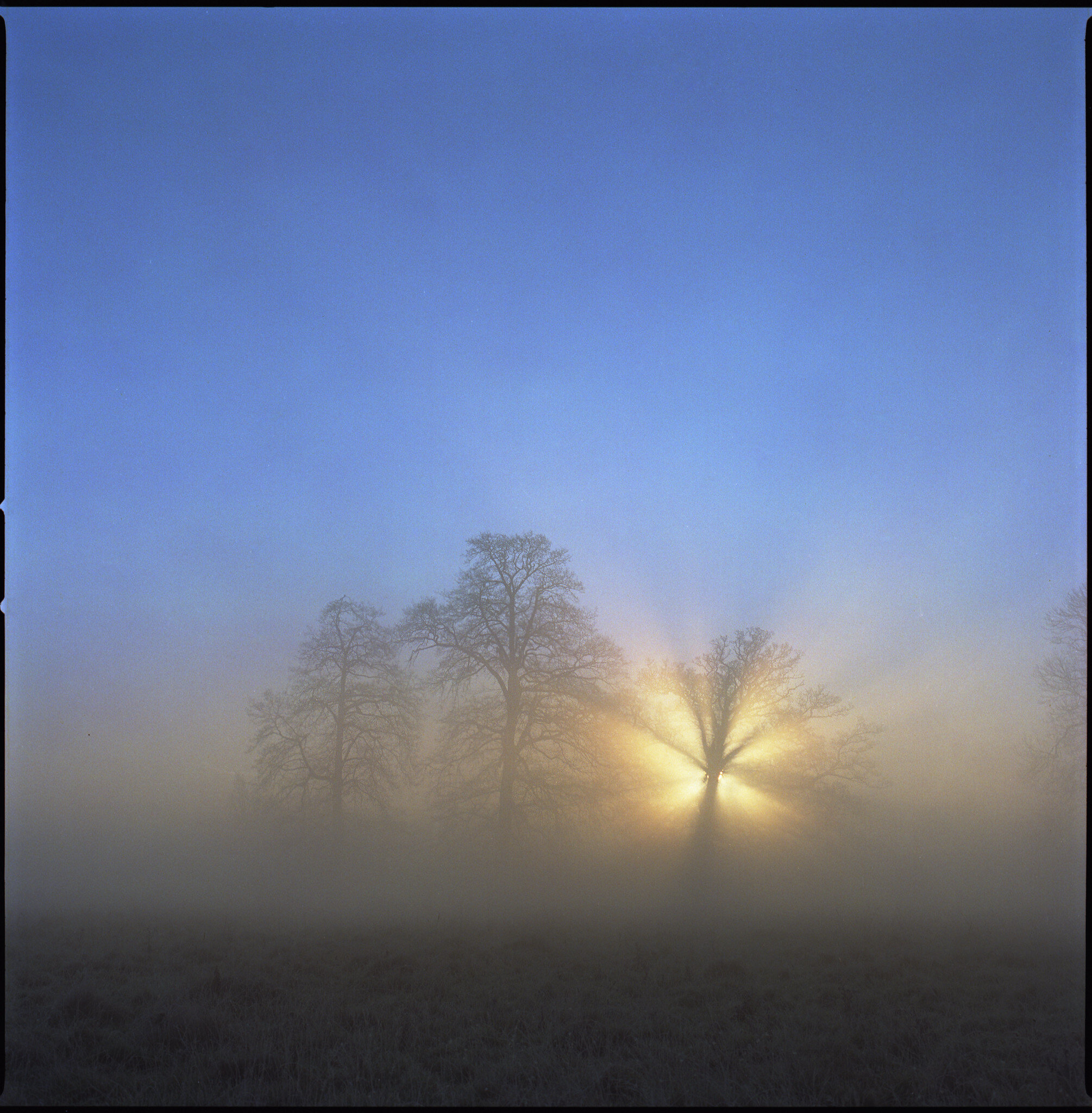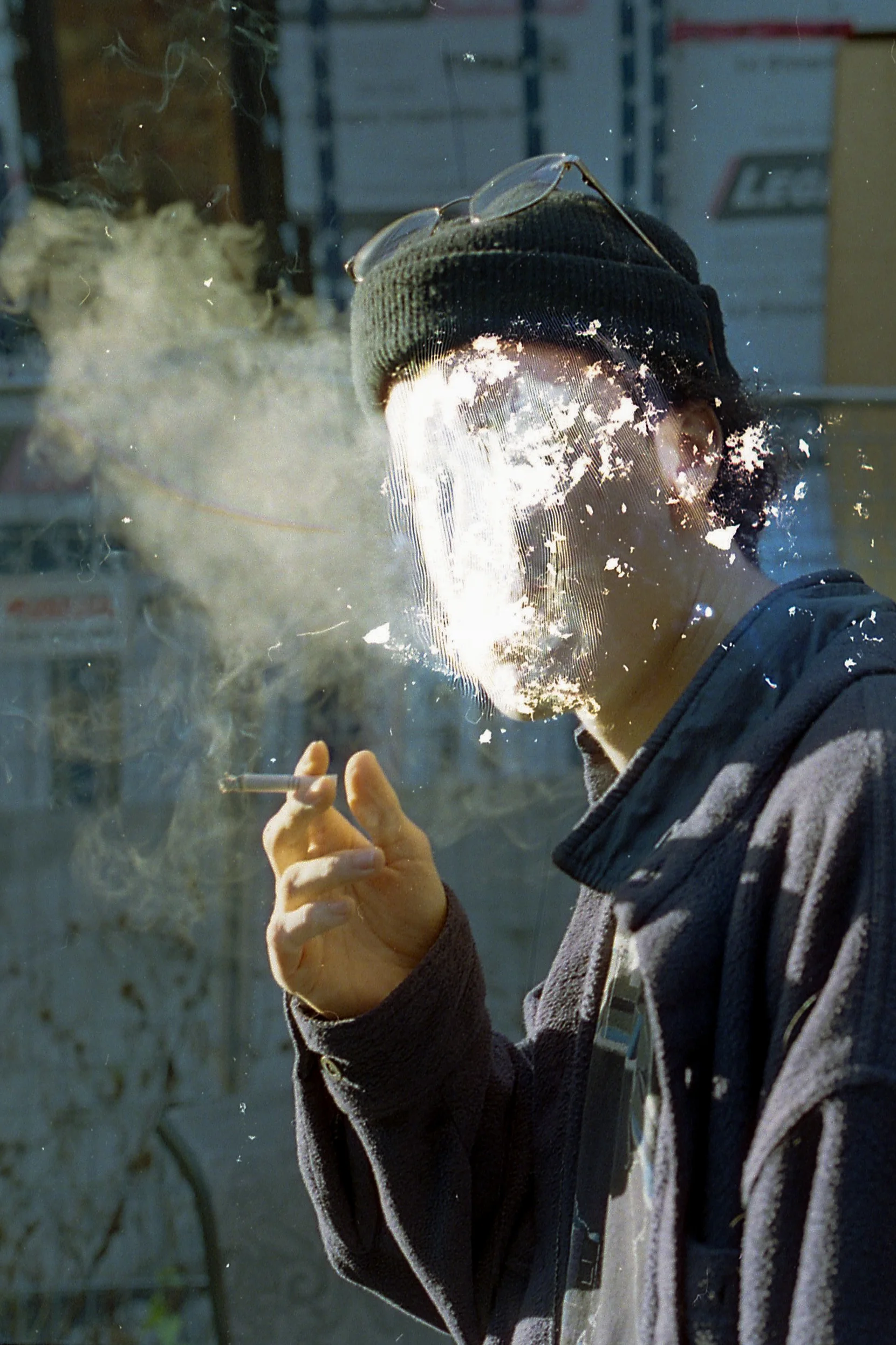A Guide to Lomography Color Film
Written and Photographed by Steve Jackson
My name is Steve Jackson, I live in a small town in Hertfordshire, England with my wife and two children. I like to use a Hasselblad medium format film camera to capture scenes from in and around my local area, places often overlooked or considered mundane but in the right conditions can be quite beautiful. To find more of my film work, check out my Instagram and Flickr.
About 10 years ago after becoming disenchanted with digital photography so I started shooting film again. I shot color film from Kodak and Fuji, Black & white film from Ilford. I had heard of Lomography, a pal had shown me a rather dubious photo he had made with a Lomography Diana camera. He's a good pal and I told him exactly what I thought of it. Some years later I visited the Lomography site and I'm pretty certain I laughed out loud at their "10 Golden Rules" and then went on to buy a roll of their redscale film. I didn't feel compelled to shoot it and it lay forgotten in the bottom of my bag until one morning I'd quite literally run out of any alternatives. The light was nice and I wanted to carry on shooting, so I loaded the camera with the redscale film and took some photos at a local nature reserve.
This redscale film made a familiar location that I had photographed way too many times take on a whole new look with bold monotone frames of orange and black. In comparison, the results I got from the conventional color film I shot the same morning were most likely nice, I don't remember.
I've since shot some different types of Lomography 120 format color film and each has distinctive characteristics and bring their own interpretation of a scene. From dramatic changes in color to films I can shoot without having to use a tripod, in one way or another each Lomography film type broadens my creative choices.
Occasionally their films, just like my mates Diana camera, are a little rough around the edges, I seem to get a few more imperfections compared to the major brands and I wish they would do something about the "fat roll" which causes light leaks around the edges of the frame. The backing paper is thick and the leader is so short. But Just like their 10 golden rules and my mate’s Diana photos I'm learning to embrace the alternative way of looking at things. Lomography film most certainly adds to the enjoyment I get from photography and is a big reason why I continue to shoot film.
Please find below some examples of photos I have made along with some notes and observations about my experience with using Lomography color film:
Shot on Lomography Redscale Film
Lomography Redscale XR 50-200 film
Normal color film that has been reverse rolled onto another spool. You shoot through the orange film base to expose the light-sensitive emulsion on the other side. It is possible to roll your own redscale film and it sounds simple enough to do, I'd certainly like to experiment. What other colors might be possible? Would slide film go purple? But in reality, it’s quite a tricky operation to perform without a darkroom. I only have a changing bag and I'm certain I'd make a right pickle of it. It is my understanding that 220 and 135 format films are easier to reverse roll as you don't have any backing paper to contend with and that some color film stocks are better suited to turn into a redscale film than others. With their redscale film, Lomography have already done this for you and they recommend you expose the film at between 50 and 200 iso. Shoot it at iso50 for a more subtle effect; it then tends to give warmth to a scene, allowing a lot of the natural colors to make an appearance.
Shoot it at iso200 for a more dramatic effect; shadows become almost solid black and highlights shine vivid with yellow and orange. It's naturally a very grainy film and I'm guessing the donor film that Lomography made this from was originally a high-speed color film.
Shot on Lomography Color Negative 800 Film
Lomography Color Negative 800 film
A decent quality high-speed color film with relatively fine grain and a warm color tone.
A really easy film to shoot, it suits almost any type of scene or subject and like any iso800 film, it gives the photographer a little more control over light conditions and depth of field without always needing to carry a tripod. It scans really well and the colors are well presented. It does have a different look to Kodak Portra 800, the actual film base is more brown than orange and lends a slightly warmer tone. If at all possible load and unload this film out of direct sunlight, it appears to be quite susceptible to light leaking around the edges of the backing paper.
Shot on Lomography Color Negative 400 Film
Lomography Color Negative 400 Film
Another good quality color film which gives different results depending on how much light you give it. Overexpose for subtle pastel-like colors or shoot at box speed for bright punchy colors. It handles both highlights and shadows very successfully, giving details in even the harshest light. The grain is quite pronounced but it does scan really well and needs little to no color correction.
Shot on Lomography Color Negative 100 Film
Lomography Color Negative 100 Film
A film to use with a tripod or you could make some multiple exposures. It bursts with intense color but still manages to represent them naturally so photos look satisfyingly real. It's also very cheap which makes it suitable to experiment with. ICM anyone?
purple people
Lomography Lomochrome Purple XR 100 - 400 film
This film is recommended to be shot between 100 and 400 iso. The new version of this film boasts very fine grain and is very sharp. It also drastically changes the color seen in real life. Green becomes purple, blue becomes green but for the most part, leaves the color red unchanged. If you overexpose this film you will get a little more pink than purple. Underexpose and colors range from purple to very purple! Another film well worth playing around with, you can never quite tell what you will get.
I have yet to try any of Lomography's B&W film and I'm starting to see some really cool examples of photos made with the newly released Lomochrome Metropolis.
They release and re-release new films quite frequently but will often discontinue film once stocks have diminished. I wish I'd realized at the time quite how special their Turquoise film was. I have no idea if it will make a return but I really hope so. In any case, I'm confident that Lomography has something else up their sleeve and it's good to see there are manufacturers committed to the development and future success of film.
Additional Lomography Sample Photos:
Infrared Universe shot on Lomochrome Purple
Portrait as an Ashtray shot on Lomo 800
Hong Kong Inception shot on Lomo Lady Grey 400
If you enjoyed this article, feel free to check out our Film-Focused YouTube Channel!












